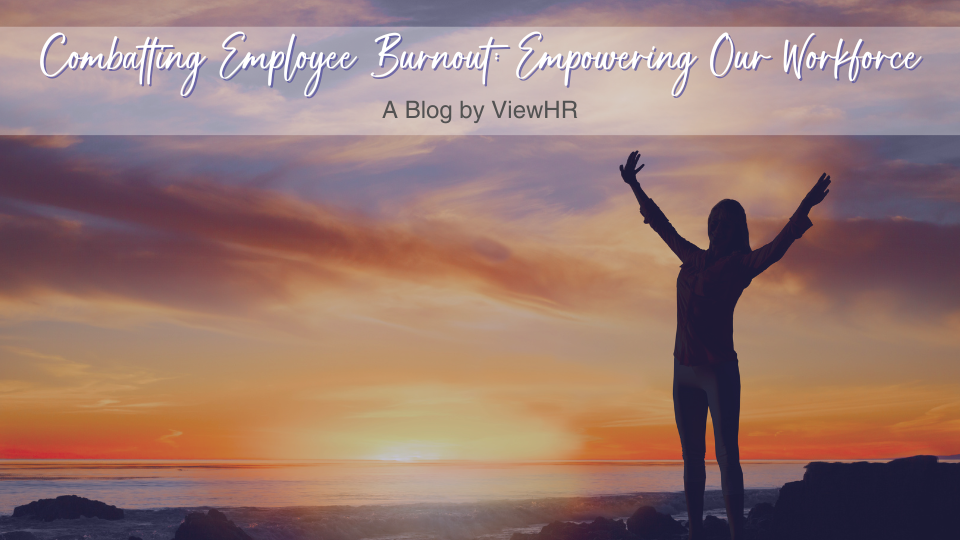Drop off your CV
We serve the global HR community through our offices located in Delhi, Hong Kong, London, New York, São Paulo and Singapore and have placed HR leaders in over 30 countries.
Employee burnout, a long-recognised issue, is now gaining more attention and acknowledgement...

Employee burnout, a long-recognised issue, is now gaining more attention and acknowledgement. The World Health Organisation defines burnout as a syndrome resulting from unmanaged chronic workplace stress, marked by three dimensions:
Depletion of energy and heightened exhaustion.
Escalating mental distance from professional responsibilities, resulting in pervasive negativity or cynicism.
Diminished professional efficacy, marked by a tangible decline in performance.
This pervasive issue not only induces a state of chronic disinterest and fatigue among employees but also exerts a deleterious impact on overall productivity. Organisations grappling with burnout risk encountering elevated staff turnover, diminished employee engagement, and an erosion of workplace culture.
Characterised as a "silent epidemic," the year 2023 witnessed a staggering 62% of employees globally reporting burnout, an alarming aftermath of the Covid-19 era. The ubiquity of remote work has compounded this challenge, with the perpetual sense of being on call 24/7 profoundly affecting the global workforce.
In this paradigm shift, mental health has assumed unprecedented prominence in the corporate discourse. It is imperative for organisations, particularly those of global stature, to be cognisant of and proactively address the spectre of burnout to cultivate a robust and healthy work environment.
Recent indicators from the United Kingdom underscore the urgency of the matter, with sickness levels reaching a decade-high in September 2023. Mental health emerged as one of the primary causes of sick leave, further emphasising the exigency of addressing burnout within the global workforce.
Recognising the nuanced signs of burnout is pivotal, including:
Persistent fatigue and a sense of being overwhelmed.
Feelings of helplessness, entrapment, or defeat.
Growing detachment from professional responsibilities, as well as personal connections.
Heightened negativity and cynicism within the workplace.
Erosion of self-confidence, manifesting as a lack of belief in one's capabilities.
Protracted task completion times, indicative of waning productivity.
To effectively address this multifaceted challenge, global HR leaders and directors are urged to consider dynamic measures:
Implement Robust Support Mechanisms:
Establish an all-encompassing Employee Assistance Programme (EAP) featuring 24/7 helplines dedicated to mental health support. Consider investing in Mental Health First Aiders or offering training to identify and address early signs of burnout.
Optimise Communication Strategies:
Elevate communication standards by adhering to clarity, conciseness, and relevance. Guard against information overload and maintain a focused approach to disseminating key points.
Acknowledge and Appreciate Team Endeavours:
Regularly express genuine praise and recognition, fostering a positive culture that counteracts the self-doubt pervasive in burnout scenarios.
Cautiously Manage Workload Dynamics:
Exercise prudence in setting and managing workload expectations, permitting employees regular breaks, encouraging physical activity, and exposure to natural light. Establish a conducive feedback loop for employees to voice concerns about workload dynamics.
Champion Career Development Initiatives:
Facilitate meaningful one-on-one engagements to delve into employee aspirations and chart growth trajectories. Providing a sense of purpose and long-term goals can significantly alleviate burnout-related anxieties.
Understanding and mitigating burnout demands a concerted effort, particularly within the dynamic landscape of global HR management. By fostering robust connections with employees and systematically addressing contributing factors, organisations can forge a resilient and empowered workforce.
If you have any questions regarding burnout please contact ViewHR.